Japanese page
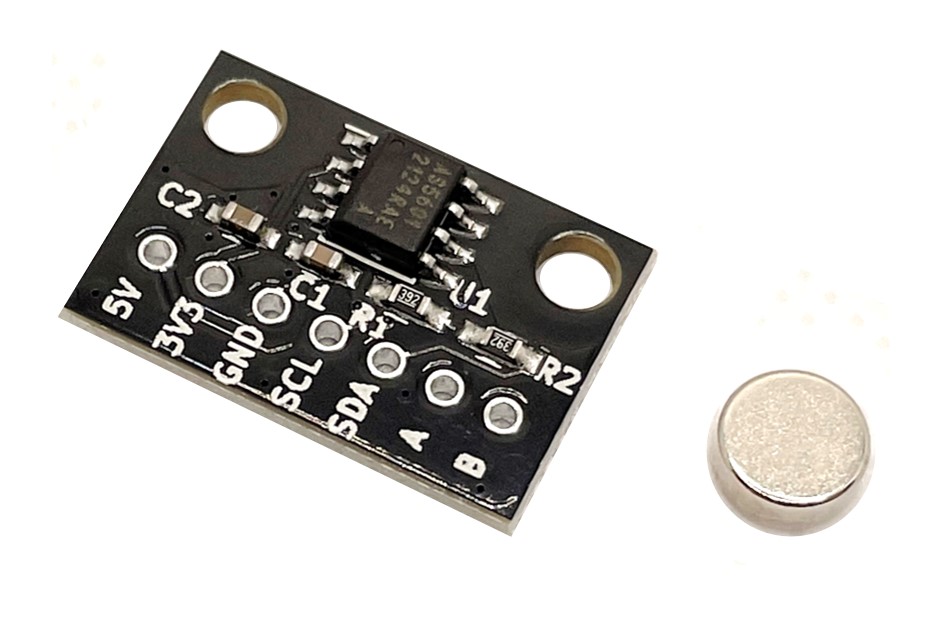
Breakout board of the AS5601 (ams AG) magnetic absolute rotary encoder with 12-bit (4096ppr) resolution to 2.54mm pitch.
A neodymium magnet is included.
Power supply pins for 5V, 3.3V, and GND, and pins for I2C and A/B phase incremental outputs are provided. The supply voltage is 5V or 3.3V.
Feature
- High resolution: 4096ppr (incremental output is up to 2048ppr)
- Magnetic type enables non-contact angle measurement, excellent reliability and durability
- Interface
- I2C: Angle reading and operation setting are possible by accessing the config register
- Incremental output: Quadrature output of A/B phase with configurable resolution from 8ppr to 2048ppr
- Sampling time: 150μs
- Capable of reading values even when the axis center of the AS5601 and neodymium magnet is off by about 1mm
Sales
Please contact us for bulk orders and inventory inquiries.
Included Items
- Board ×1
- Neodymium magnet ×1
Specifications
- Board size: W20 x D13.5 mm
- Mounting holes: 15mm pitch, M3 x 2
- Magnet size: Φ6 x 2.5 mm
- Magnetization: Diametric
- When supplying 5V for power supply voltage, leave the 3.3V pin open. When supplying 3.3V, also supply 3.3V to the 5V pin.
- PUSH pin is not connected and cannot be accessed
How to mount
- Attach the included magnet to the center of the rotor shaft.
- Attach the board to the fixture so that the center of the AS5601 aligns with the center of the magnet.
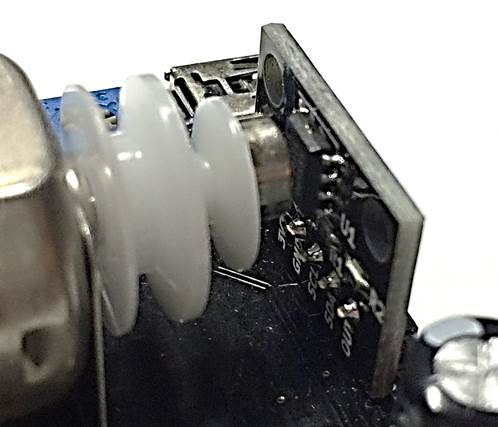
Program example with Arduino
Angle acquisition via I2C
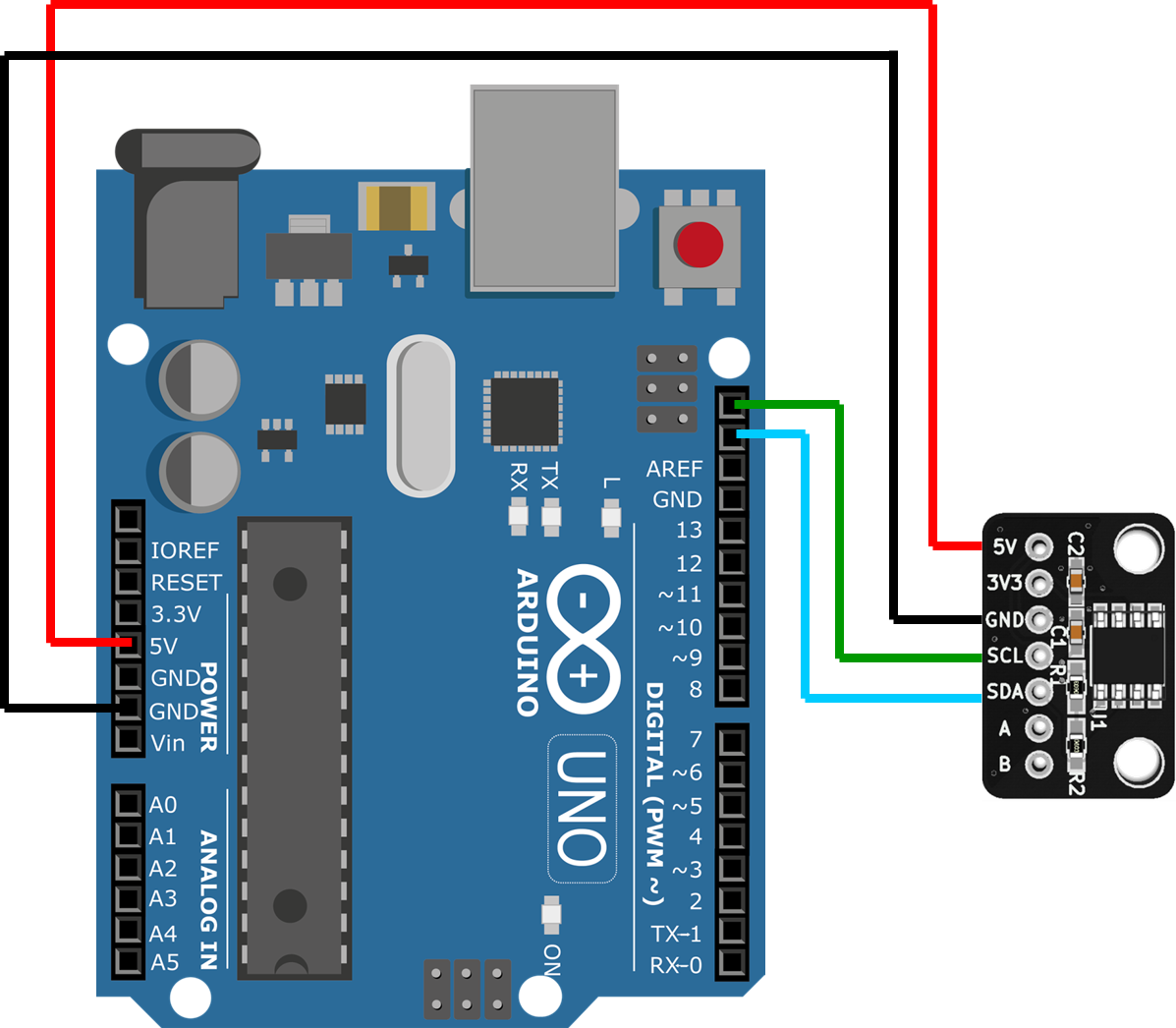
Source code
Minimum code
#include <stdint.h>
#include <Wire.h>
#define AS5600_AS5601_DEV_ADDRESS 0x36
#define AS5600_AS5601_REG_RAW_ANGLE 0x0C
void setup() {
// I2C init
Wire.begin();
Wire.setClock(400000);
// Read RAW_ANGLE value from encoder
Wire.beginTransmission(AS5600_AS5601_DEV_ADDRESS);
Wire.write(AS5600_AS5601_REG_RAW_ANGLE);
Wire.endTransmission(false);
Wire.requestFrom(AS5600_AS5601_DEV_ADDRESS, 2);
uint16_t RawAngle = 0;
RawAngle = ((uint16_t)Wire.read() << 8) & 0x0F00;
RawAngle |= (uint16_t)Wire.read();
// Raw angle value (0 ~ 4095) is stored in RawAngle
}
void loop() {
}
Obtaining angles via incremental output pins
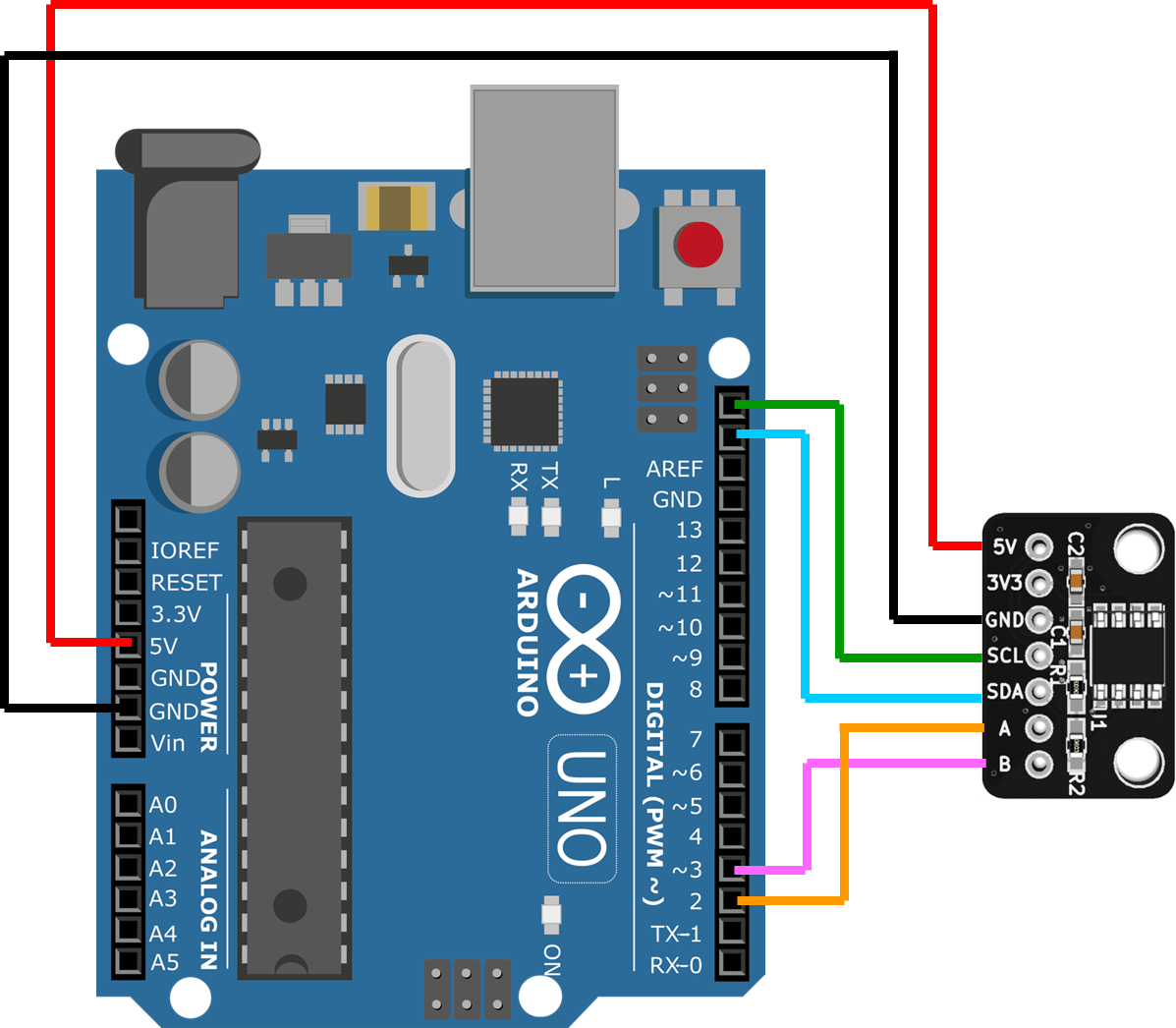
Source code
Minimum code
#include <stdint.h>
#include <Wire.h>
#define AS5600_AS5601_DEV_ADDRESS 0x36
#define AS5601_REG_ABN 0x09
volatile int32_t EncoderCount;
void Encoder_GPIO_init(void) {
DDRD &= ~((1 << PD2) | (1 << PD3)); // Set PD2 and PD3 as input
EICRA = 0b00000101; // Trigger event of INT0 and INT1 : Any Logic Change
EIMSK = 0b00000011; // Enable interrupt INT0 and INT1
sei(); //Enable Global Interrupt
}
// Encoder "A" pin logic change interrupt callback function
ISR(INT0_vect) {
updateEncoderCount();
}
// Encoder "B" pin logic change interrupt callback function
ISR(INT1_vect) {
updateEncoderCount();
}
void updateEncoderCount(void) {
const static int8_t EncoderIndexTable[] =
{0, -1, 1, 0, 1, 0, 0, -1, -1, 0, 0, 1, 0, 1, -1, 0};
static uint8_t EncoderPinState_Now, EncoderPinState_Prev = 0;
EncoderPinState_Now = (PIND >> 2) & 0x03; // Bit1 : PD3 (Encoder B), Bit0 : PD2 (Encoder A)
EncoderCount += EncoderIndexTable[EncoderPinState_Prev << 2 | EncoderPinState_Now];
EncoderPinState_Prev = EncoderPinState_Now;
}
void Encoder_I2C_init(void) {
// Set AS5601 resolution 2048ppr
Wire.beginTransmission(AS5600_AS5601_DEV_ADDRESS);
Wire.write(AS5601_REG_ABN);
Wire.write(0b00001000); // ABN(3:0)
Wire.endTransmission();
delay(1);
}
void setup() {
// I2C init
Wire.begin();
Wire.setClock(400000);
// Peripheral init
Encoder_I2C_init();
Encoder_GPIO_init();
}
void loop() {
// Angle value (0 ~ 2047) is stored in EncoderCount
}
Fixed resolution by burning in a config register
The default resolution of AS5601 is 8ppr, so in the initial state, it is necessary to set the resolution every time the power is turned on.
Therefore, by setting the resolution to 2048ppr and then burning the setting register with the Burn_Setting command, the resolution is fixed at 2048ppr from startup even if the power is turned off and on again, eliminating the need to re-set the resolution and other setting information via I2C.
Once the register is written, the resolution, filter settings, etc. cannot be changed.
Sample code is here.
Documents
Schematics
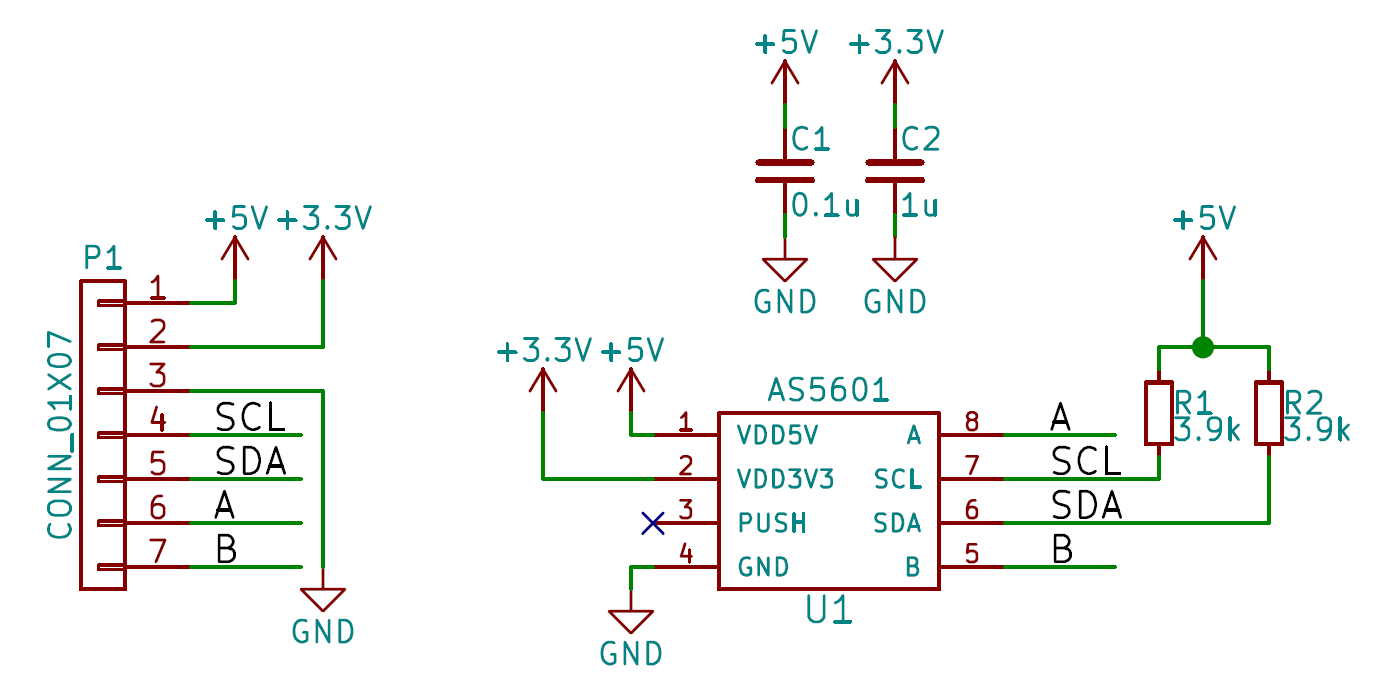
PDF File:schematic-v1_0.pdf
Dimensions

DXF File: dimension_dxf.zip
3D CAD Data
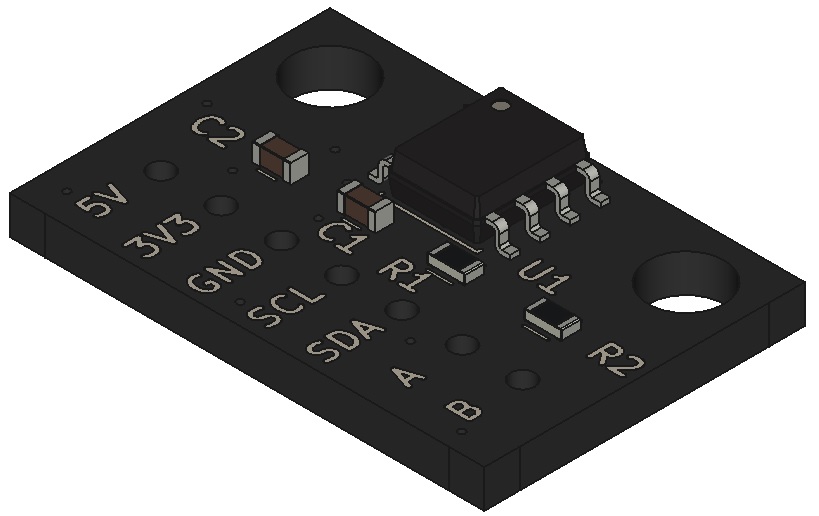
STEP File:3d_step.zip
